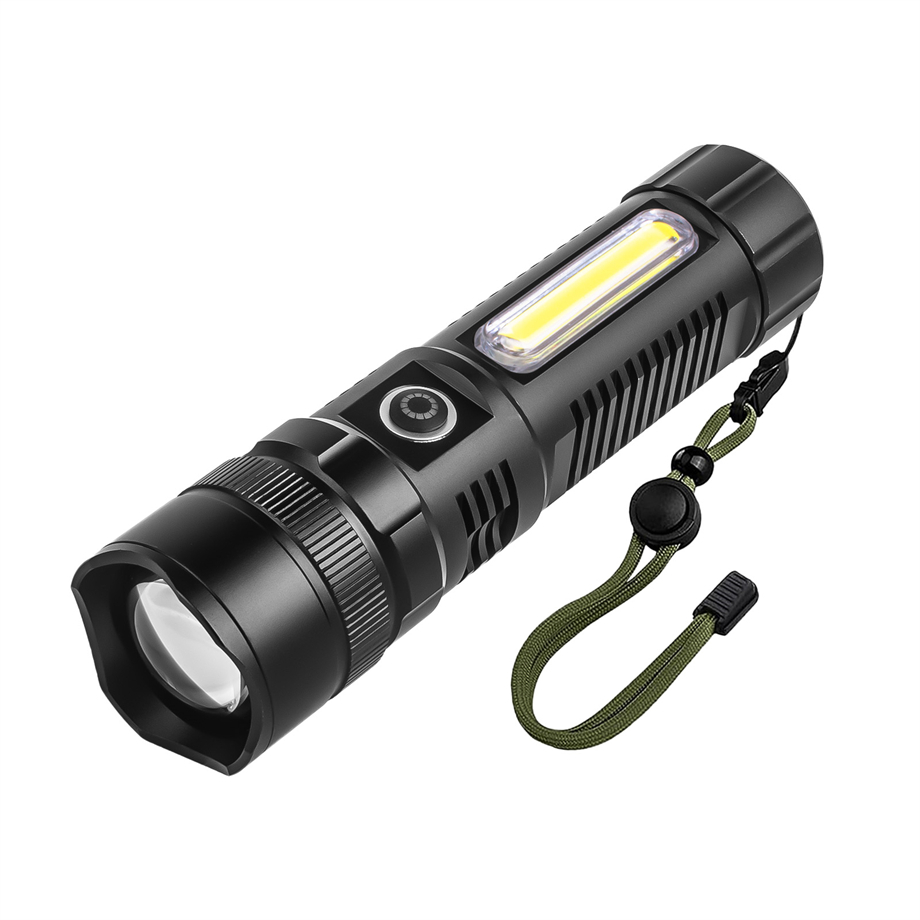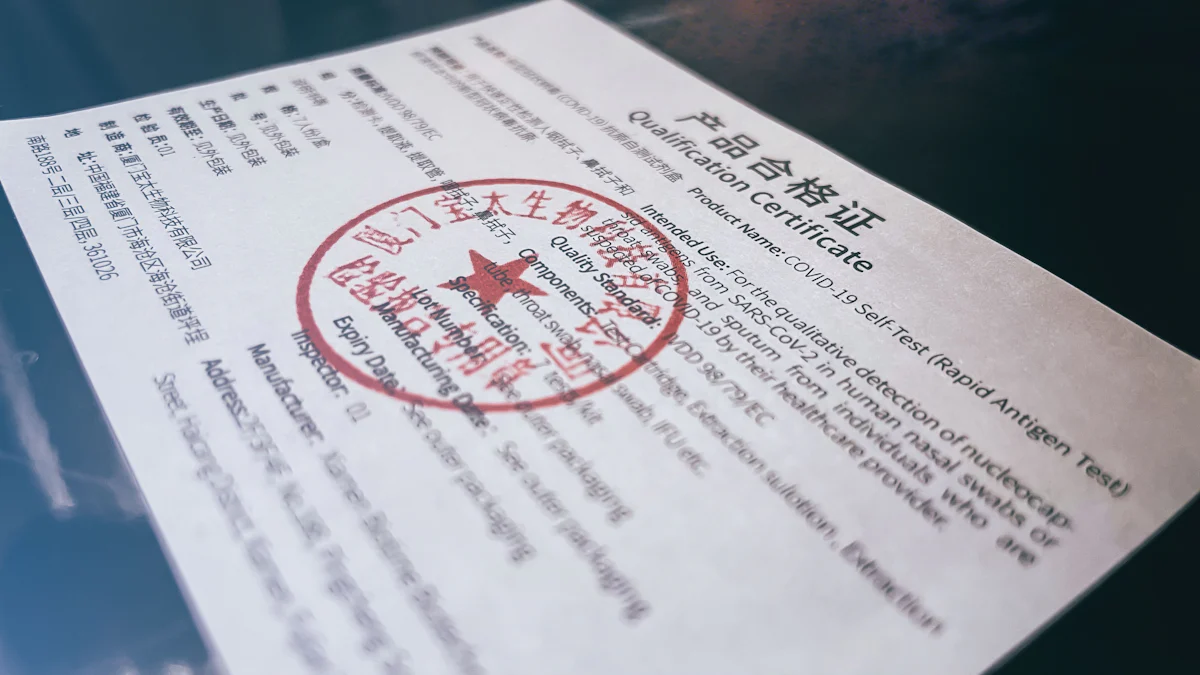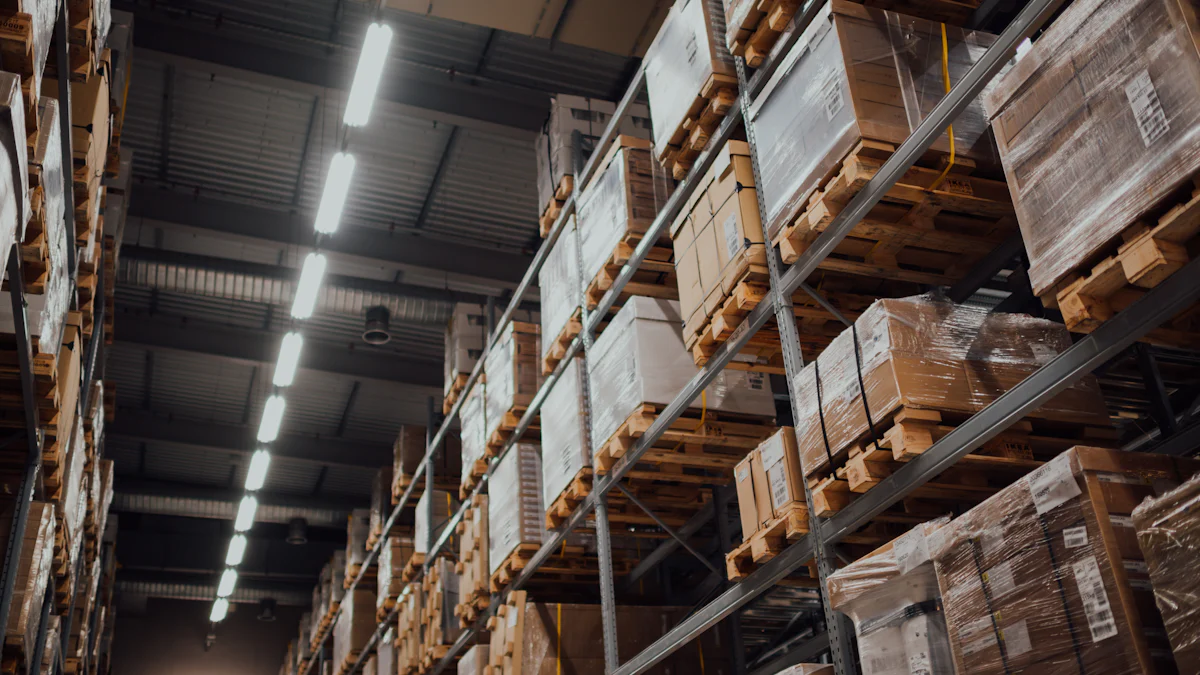What Compliance Standards Should Your Flashlight Supplier Meet?

When selecting a flashlight supplier, it’s crucial to ask, "What Compliance Standards Should Your Flashlight Supplier Meet?" Ensuring they adhere to key compliance standards is vital for product safety, reliability, and legal conformity. Certifications such as ANSI/NEMA FL 1-2009, OSHA, UL, and RoHS confirm that flashlights meet performance and safety benchmarks. A supplier that meets these standards helps mitigate legal risks while delivering durable, high-quality products. By focusing on compliance, you safeguard your business and provide users with dependable tools for diverse environments.
Key Takeaways
Pick suppliers that follow ANSI/NEMA FL 1-2009 rules for brightness and runtime.
Check OSHA rules for flashlights used in risky places to keep users safe.
Find UL or ETL labels to make sure flashlights are safe and work well.
Ask suppliers for papers and test results to prove they follow safety and environmental rules.
Work with trusted suppliers who have good reviews and a history of quality products.
Key Compliance Standards for Flashlight Suppliers

ANSI/NEMA FL 1-2009
Performance metrics: Brightness, runtime, and beam distance
When evaluating flashlights, you should look for compliance with ANSI/NEMA FL 1-2009 standards. These standards define key performance metrics, ensuring you get reliable and consistent results. The table below highlights the essential features:
Feature | Description |
|---|---|
Light Output | Measured in lumens, it quantifies the total emitted light energy from the flashlight. |
Beam Distance | Indicates the distance at which the light beam produces 0.25 lux, reported in meters. |
Beam Intensity | Measures the maximum luminous intensity along the central axis of the beam, in candela. |
Runtime | Specifies the duration in minutes for light output to drop by 10% from its initial measurement. |
Durability standards: Water resistance and impact resistance
Durability is another critical aspect of ANSI/NEMA FL 1-2009. Flashlights must withstand harsh conditions. Water resistance is categorized into three levels, ensuring performance in wet environments. Impact resistance tests verify the flashlight's ability to endure drops from at least one meter. These standards guarantee that your flashlight performs reliably in challenging situations.
OSHA Requirements for Workplace Safety
Flashlight safety in hazardous environments
If you work in hazardous environments, OSHA compliance is essential. Flashlights must meet safety standards to prevent accidents. For example, they should not emit sparks or excessive heat that could ignite flammable materials.
Intrinsically safe flashlights for explosive atmospheres
In explosive atmospheres, you need intrinsically safe flashlights. These devices are designed to operate without causing ignition, even in the presence of gases or dust. OSHA mandates this feature for industries like mining and chemical manufacturing.
UL and ETL Certifications
UL 1576 for safety and performance
UL 1576 certification ensures flashlights meet rigorous safety and performance standards. It covers various categories, including battery-powered flashlights, UV flashlights, and those with photovoltaic sources. The table below outlines these categories:
Category of Flashlights and Lanterns | Description |
|---|---|
Battery-powered flashlights | Includes those powered by primary and secondary batteries. |
Ultraviolet (UV) flashlights | Specifically includes UV flashlights for specialized applications. |
Flashlights with photovoltaic sources | Must comply with additional UL 1703 requirements. |
ETL certification for electrical and fire safety
ETL certification offers an alternative to UL, ensuring compliance with electrical and fire safety standards. While both certifications use similar testing methods, ETL is often more cost-effective and faster. This can benefit manufacturers and reduce costs for you as a consumer.
By understanding these compliance standards, you can confidently answer the question, "What Compliance Standards Should Your Flashlight Supplier Meet?" and ensure you choose a reliable supplier.
IECEx and NEC Standards
Compliance for hazardous locations
When selecting a flashlight supplier, you must ensure their products comply with IECEx and NEC standards. These standards are critical for safety in hazardous environments. IECEx classifies hazardous areas to ensure flashlights are designed to prevent ignition sources. For example, intrinsically safe LED flashlights operate on low voltages and currents, eliminating sparks or thermal effects that could ignite flammable materials. In more extreme conditions, explosion-proof flashlights provide additional protection.
The NEC further enhances safety by defining hazardous location classifications. Flashlights must meet these classifications to operate safely in areas with flammable gases, vapors, or dust. Manufacturers also need rigorous quality control processes to consistently meet these safety requirements. The table below summarizes key compliance requirements:
Compliance Requirement | Description |
|---|---|
Certification Standards | Flashlights must meet specific standards set by IEC and UL to ensure safety in hazardous environments. |
Compliance with Hazardous Location Classifications | Must adhere to NEC classifications for areas with flammable materials, ensuring safe operation. |
Quality Assurance | Manufacturers need rigorous quality control processes to consistently meet safety standards. |
Protection methods for confined spaces
Confined spaces present unique challenges. Flashlights used in these areas must minimize risks like ignition of gases or dust. Intrinsically safe designs are ideal for such environments. These flashlights ensure safety by operating without generating heat or sparks. By choosing a supplier that adheres to IECEx and NEC standards, you can trust their products to perform reliably in these high-risk settings.
Environmental and Quality Standards
RoHS and REACH compliance for environmental safety
Environmental safety is another critical factor when evaluating flashlight suppliers. RoHS compliance ensures flashlights are free from hazardous substances like lead and mercury. This reduces environmental pollution and promotes safer disposal practices. REACH compliance goes further by regulating chemicals used in manufacturing. Together, these standards help create a cleaner environment and protect public health. RoHS-compliant LEDs also reduce energy consumption, making them an eco-friendly choice.
CE and ISO certifications for quality assurance
Quality assurance is essential for reliable flashlight performance. CE certification confirms that flashlights meet European safety, health, and environmental standards. ISO certifications, such as ISO 9001, ensure manufacturers follow strict quality management systems. These certifications guarantee consistent product quality and performance. By choosing a supplier with CE and ISO certifications, you can confidently answer the question, "What Compliance Standards Should Your Flashlight Supplier Meet?" and ensure you receive dependable, high-quality products.
Why Compliance Standards Matter
Ensuring Product Quality
Reliable performance under various conditions
Compliance standards ensure flashlights perform reliably in diverse environments. For example, the ANSI/NEMA FL1 Standard provides guidelines for testing light output, beam distance, and runtime. These metrics help you evaluate whether a flashlight will meet your needs. Similarly, the IEC 60529 (IP Code) classifies protection against dust and water, ensuring durability in harsh conditions. The table below highlights how compliance standards impact product quality:
Standard | Impact on Quality |
|---|---|
ANSI/NEMA FL1 Standard | Guidelines for performance testing, enhancing reliability and customer satisfaction. |
IEC 60529 (IP Code) | Classifies protection against dust and water, ensuring durability of flashlights. |
CE Marking | Signifies compliance with safety and health directives in the EU, ensuring consumer safety. |
UL Listing | Indicates independent safety testing, enhancing trust in product safety. |
Durability and longevity of the flashlight
Durability is critical for long-term use. Standards like ANSI/NEMA FL1 and IEC 60529 ensure flashlights can withstand impacts, water exposure, and other challenges. CE Marking and UL Listing further confirm that products meet stringent safety and environmental requirements. These certifications guarantee that your flashlight will last longer and perform consistently.
Enhancing User Safety
Preventing accidents in hazardous environments
Compliance standards protect users from common safety risks. For instance, flashlights with overheating protection prevent burns during extended use. Battery safeguards, such as overcharge and short circuit protection, reduce the risk of explosions. Electrical insulation and temperature control also ensure safe operation. These features make compliant flashlights safer for both personal and professional use.
Overheating Protection: Prevents burns during prolonged use.
Battery Protection: Guards against overcharge, over-discharge, and short circuits.
Electrical Insulation: Prevents shocks or short circuits.
Temperature Control: Maintains safe operating temperatures.
Meeting safety requirements for professional use
Professional environments demand high safety standards. The ANSI/NEMA FL1 Standard, developed by industry leaders, ensures flashlights meet specific performance criteria like light output and impact resistance. The IEC 60529 (IP Code) enhances safety by providing dust and water protection guidelines. CE Marking and UL Listing further ensure compliance with health and environmental directives, making these flashlights reliable for professional applications.
Legal and Regulatory Protection
Avoiding fines and penalties for non-compliance
Non-compliance can lead to significant legal and financial consequences. Flashlights that fail to meet safety standards may result in fines, product recalls, or liability lawsuits. By choosing a supplier that adheres to compliance standards, you protect your business from these risks.
Meeting import/export regulations
Compliance standards simplify international trade. Certifications like CE Marking and UL Listing ensure flashlights meet import/export regulations. The table below outlines how these standards help businesses:
Aspect | Description |
|---|---|
Certification Standards | Flashlights must meet standards set by bodies like IEC and UL to ensure safety in hazardous areas. |
Compliance with Hazardous Classifications | Flashlights must adhere to classifications defined by NEC for safe operation in specific environments. |
Quality Assurance | Manufacturers must implement quality control processes to ensure consistent safety standards. |
By understanding "What Compliance Standards Should Your Flashlight Supplier Meet?", you can ensure your products meet legal requirements and maintain a competitive edge in the market.
Risks of Choosing a Non-Compliant Supplier

Choosing a flashlight supplier that does not meet compliance standards can lead to serious consequences. These risks affect your finances, product quality, and user safety.
Legal and Financial Consequences
Fines and penalties for regulatory violations
Non-compliance with industry standards often results in fines or penalties. Regulatory bodies enforce strict rules to ensure product safety and environmental protection. If your supplier fails to meet these requirements, you may face legal action. This can damage your business and drain your financial resources.
⚠️ Tip: Always verify your supplier’s certifications to avoid costly penalties.
Costs of product recalls and liability lawsuits
Defective flashlights can lead to product recalls. Recalls not only disrupt your operations but also incur significant costs. Worse, if a faulty flashlight causes harm, you could face liability lawsuits. These lawsuits can tarnish your reputation and result in hefty settlements.
Compromised Product Quality
Increased risk of product failure
Non-compliant suppliers often cut corners during production. This increases the likelihood of product failures. Flashlights may stop working in critical situations, leaving users stranded. Poor-quality materials and inadequate testing contribute to these failures.
Negative impact on brand reputation
Your brand’s reputation depends on the quality of your products. Selling unreliable flashlights can erode customer trust. Negative reviews and word-of-mouth criticism can harm your business. Rebuilding a damaged reputation takes time and resources.
Safety Hazards
Potential for user injuries or accidents
Non-compliant flashlights pose safety risks. Faulty designs or materials can cause overheating, electrical shocks, or even explosions. These hazards endanger users, especially in hazardous environments.
Non-compliance with workplace safety standards
Workplaces rely on compliant tools to maintain safety. Non-compliant flashlights may fail to meet OSHA or IECEx standards. This puts workers at risk and exposes your business to legal liabilities.
✅ Note: Partnering with a compliant supplier ensures your products meet safety standards and protect users.
By avoiding non-compliant suppliers, you safeguard your business, customers, and reputation. Always prioritize compliance when selecting a flashlight supplier.
How to Verify Your Flashlight Supplier’s Compliance
Requesting Documentation
Certificates of compliance for relevant standards
Requesting certificates of compliance is the first step in verifying a flashlight supplier’s adherence to industry standards. These documents confirm that the supplier meets essential safety and performance benchmarks. For example, ANSI/NEMA FL1 certification ensures flashlights are tested for brightness, runtime, and durability. CE marking signifies compliance with European safety and environmental directives. The table below highlights key certifications you should request:
Standard | Description |
|---|---|
ANSI/NEMA FL1 | Guidelines for flashlight performance testing, including light output and runtime. |
IEC 60529 (IP Code) | Classifies protection against dust and water intrusion. |
CE Marking | Confirms compliance with EU safety, health, and environmental directives. |
UL Listing | Indicates independent safety testing by Underwriters Laboratories. |
Test reports for performance and safety metrics
Ask for test reports to verify the flashlight’s performance and safety. These reports should include data on beam distance, impact resistance, and waterproofing. Suppliers with transparent documentation demonstrate their commitment to quality and compliance.
Conducting Supplier Audits
On-site inspections of manufacturing processes
Conducting on-site inspections ensures the supplier follows proper manufacturing practices. Start with a visual inspection to check for defects in the flashlight’s exterior, battery compartment, and LED components. Next, perform functional tests to measure power output, runtime, and waterproof performance. Finally, assess safety features like overheating protection and electrical insulation. Follow these steps during your inspection:
Visual Inspection
Check for defects in switches, buttons, and labels.
Inspect the battery compartment for corrosion.
Functional Testing
Measure beam distance and runtime.
Test waterproof and impact resistance.
Safety Assessment
Verify overheating protection and battery safeguards.
Verifying adherence to quality control protocols
Ensure the supplier complies with quality control standards like the Flashlight (Quality Control) Order, 2024. This regulation mandates adherence to IS 2083 standards and requires BIS certification for flashlights sold in India. Systematic inspections and compliance with these protocols enhance product reliability.
Partnering with Reputable Suppliers
Choosing suppliers with a proven track record
Select suppliers with a history of delivering high-quality products. Look for certifications like CE, RoHS, or ISO, which indicate adherence to global standards. Reputable suppliers also offer customization options, such as branding and design modifications. The table below outlines key characteristics of reliable suppliers:
Criteria | Details |
|---|---|
Product Quality | Durable materials, high-performance LEDs, and certifications like CE or ISO. |
Customization Options | Branding, design, and functional modifications. |
After-Sales Support | Warranty, return policies, and customer service availability. |
Checking customer reviews and industry certifications
Customer reviews and industry certifications provide valuable insights into a supplier’s reliability. Positive testimonials and case studies highlight their ability to meet compliance standards. Certifications like CE and RoHS further confirm their commitment to quality and safety.
By following these steps, you can confidently answer the question, "What Compliance Standards Should Your Flashlight Supplier Meet?" and ensure your supplier meets all necessary requirements.
Compliance standards play a vital role in ensuring flashlight safety, quality, and legal conformity. By choosing a supplier that meets these standards, you protect your business from legal risks and guarantee reliable, high-quality products. To verify compliance, request documentation such as certifications and test reports. Conduct audits to inspect manufacturing processes and confirm adherence to quality protocols. Partner with reputable suppliers who have a proven track record and industry certifications. When you ask yourself, "What Compliance Standards Should Your Flashlight Supplier Meet?", these steps will guide you toward the right choice.
FAQ
What is the most important compliance standard for flashlight suppliers?
The ANSI/NEMA FL 1-2009 standard is critical. It ensures flashlights meet performance benchmarks like brightness, runtime, and durability. This certification guarantees reliable and consistent results for users.
How can you verify a flashlight supplier’s compliance?
Request compliance certificates like CE, UL, or RoHS. Ask for test reports that detail performance metrics. Conduct on-site audits to inspect manufacturing processes and confirm adherence to quality protocols.
Why is RoHS compliance important for flashlights?
RoHS compliance ensures flashlights are free from hazardous substances like lead or mercury. This protects the environment and promotes safer disposal practices. It also ensures the product meets global environmental safety standards.
What happens if you choose a non-compliant flashlight supplier?
Non-compliance can lead to legal penalties, product recalls, or safety hazards. Flashlights may fail in critical situations, damaging your reputation and endangering users. Always verify a supplier’s certifications to avoid these risks.
Are UL and ETL certifications interchangeable?
Both certifications ensure electrical and fire safety. UL is more widely recognized, while ETL offers a faster and cost-effective alternative. Either certification confirms the flashlight meets safety standards.
See Also
Navigating Quality Standards for LED Flashlights from China
A Comprehensive Overview of Flashlight Manufacturing in China
Assessing Flashlight Suppliers: Important Factors and Insights
Guidelines for Finding Trustworthy Wholesale Flashlight Suppliers
Mastering Quality Assurance in Wholesale Flashlight Acquisitions
